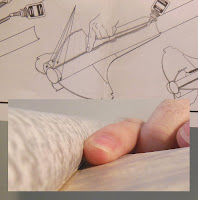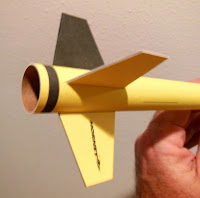Why did Elmer's Glue mess up the formula?
IF IT 'AINT BROKE . . .
I remember reading about the "New Stronger Formula" glue too years ago on the forums. Too many experienced builders were having couplers and engine mounts freeze up before they were slid into the right position. The new formula Elmer's doesn't give you a second chance, things grab way too fast.
A bottle of glue lasts me for quite a while. I found some bottles with the old label ("Bonds Strong") and I bought a four.
My old original formula bottle ran out. I grabbed a new bottle of old formula.
As it turns out, it's an old bottle label with the new formula glue inside!
The new formula is different. Thinner, like more water is in the mix.
Think of whole milk (old formula, white opaque) compared to skim milk (new formula, translucent.)
The new formula runs. It's useless for fillets or even making Zooch Funky Glue Putty.
As thin as the new glue is, I can see how a coupler could grab in the wrong place. It probably soaks into the surrounding pieces too quickly.
I usually use white glue for LPR builds. I'll have to try School Glue instead.
I'm surprised the big two rocket manufacturers have never commented on the new glues. Elmer's was the rocket building standard for years. I wonder if Estes has gotten complaints about problems from a builder using the new "stronger" formula Elmer's.
Check out this older blog post with quotes from dissatisfied builders HERE


















































